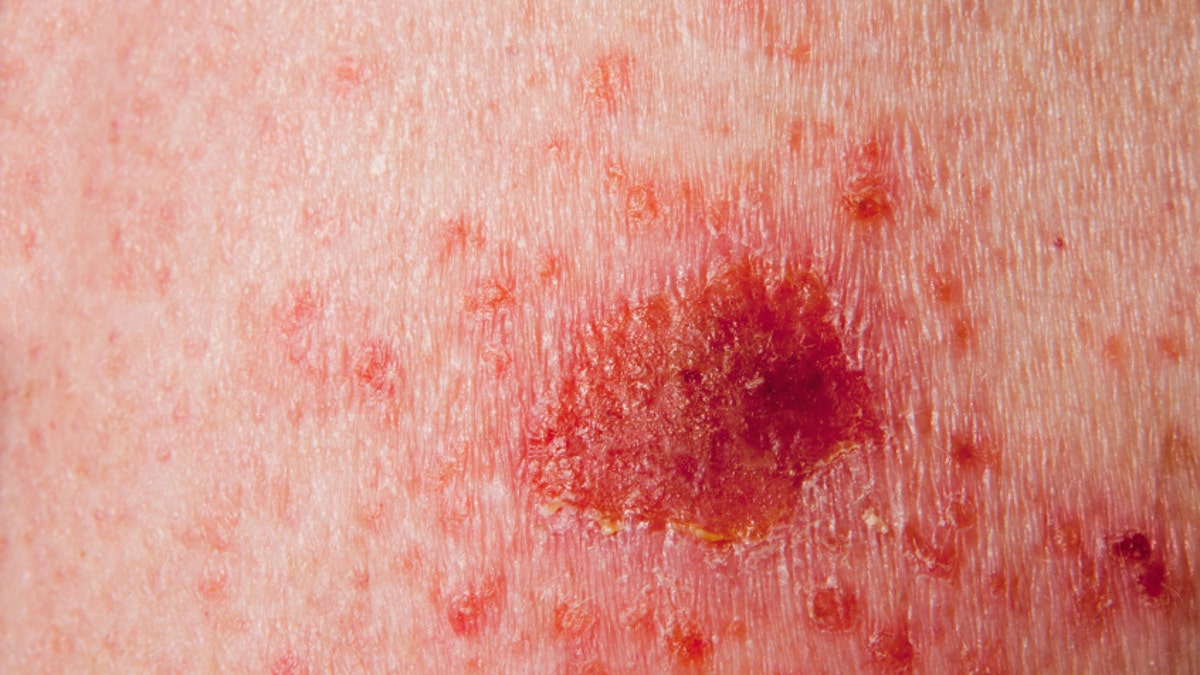
Close up of a basal cell carcinoma skin cancer. (istock)
There isn't enough evidence yet to say whether routine full-body skin cancer screenings are safe or effective, according to new proposed U.S. guidelines aimed at preventing deaths from these malignancies.
The conclusion, issued by the U.S. Preventive Services Task Force (USPSTF) as a part of updated draft recommendations on skin cancer screening, adds to an ongoing debate in the medical community about how to strike the right balance between catching dangerous tumors as early as possible and avoiding unnecessary tests and treatments that may result from catching too many harmless abnormalities.
"After an in-depth review of the benefits and harms of this preventive service, the task force found that there isn't enough evidence to know with adequate certainty whether a full-body visual skin screening exam by a doctor does or does not prevent deaths from melanoma," Dr. Mark Ebell, a task force member and researcher at the University of Georgia, said by email.
Skin cancer is the most common malignancy in the U.S., affecting an estimated 74,000 men and women in 2015, including about 9,940 who will die from the disease. The vast majority of skin cancers don't result in death. But melanoma - a rare form that accounts for less than 2 percent of cases - has a much higher death rate.
Screening may make sense for adults with a history of skin cancer or symptoms that point to the potential for melanoma, such as an abnormal mole that is changing in size, shape or color. But other people might be harmed by screening if it results in unnecessary biopsies, scarring, or damage that can affect feeling or range of motion, the task force concludes.
The USPSTF, a government-backed independent organization that reviews medical evidence, last updated its skin cancer screening guidelines in 2009. Then, as now, the task force found too little evidence to weigh in for or against routine screening of all adults. These guidelines are widely used to determine whether insurance will pay for screenings and treatments and are widely followed by primary care physicians.
One trial influencing the task force recommendation examined data on more than 360,000 adults screened in Germany after a two-year public awareness campaign. Researchers followed people for 10 years and found a 48 percent reduction in the risk of dying from melanoma in the region that had the public awareness campaign, compared to another region that didn't. But the absolute reduction in risk amounted to about 1 less melanoma death for every 100,000 people screened.
This study offered limited evidence of harms from early detection. About 4.4 percent of screened adults had a skin excision for a suspicious lesion, with the majority of these biopsies failing to result in a cancer diagnosis. Overall, one case of melanoma was detected for every 28 biopsies performed.
In a shift from the 2009 guidelines, the task force has eliminated recommendations that patients do self-exams. This guidance might make sense to include in recommendations related to counseling patients about skin cancer, which screening guidelines aren't meant to address.
But it would be a mistake for patients to fear annual screenings, said Dr. Adam Friedman, a fellows ambassador for the New York Academy of Medicine and dermatology researcher at George Washington University.
"This is not analogous to saying that this integral part of cancer surveillance is ineffective or harmful," Friedman said by email.
It's also possible that the task force focus on melanoma may not account for the potentially devastating effects of other skin cancers such as basal cell carcinoma or squamous cell carcinoma, which may result in severe tissue damage or death, said Dr. Mark Lebwohl, president of the American Academy of Dermatology.
"Individuals who notice any unusual spots on their skin, including those that are changing, itching or bleeding, should make an appointment with a board-certified dermatologist," Lebwohl added by email. "Additionally, people with an increased risk of melanoma or a history of skin cancer should talk to a dermatologist to determine how often they should receive a skin exam from a doctor."
Until December 28, members of the public can visit the USPSTF website and comment on the proposed guidelines.
